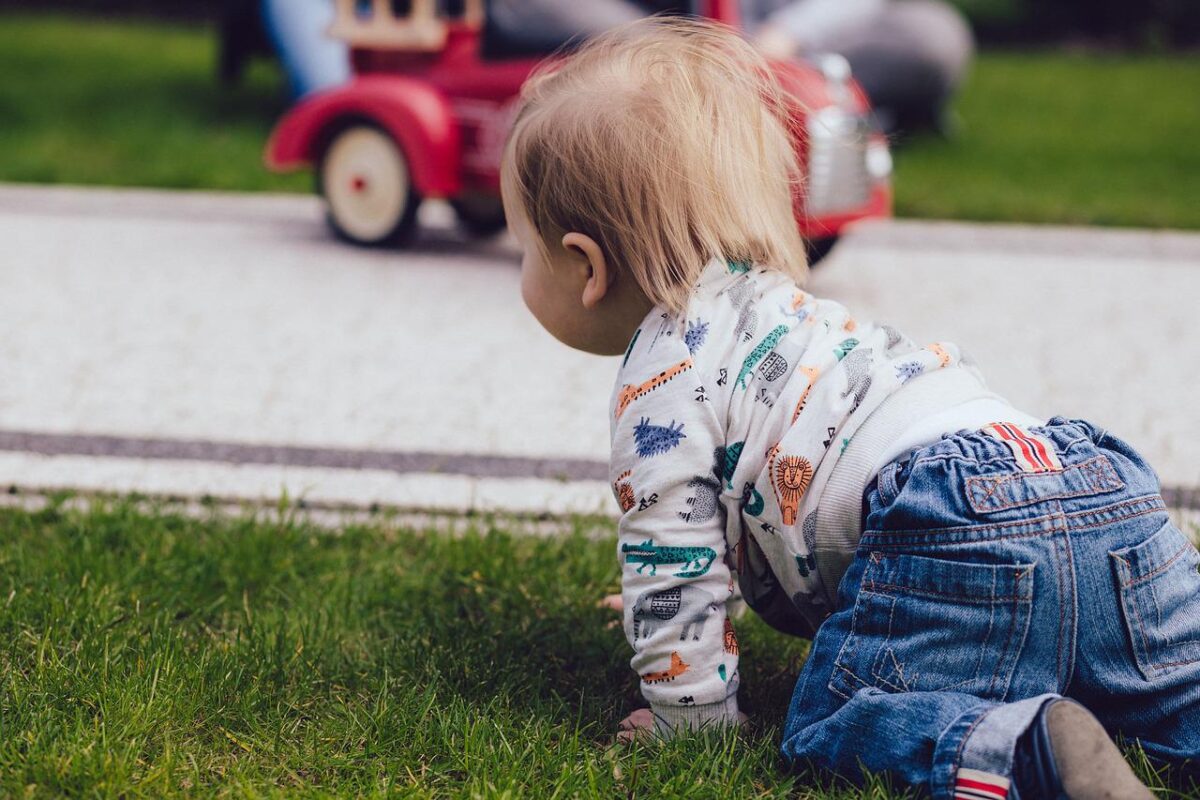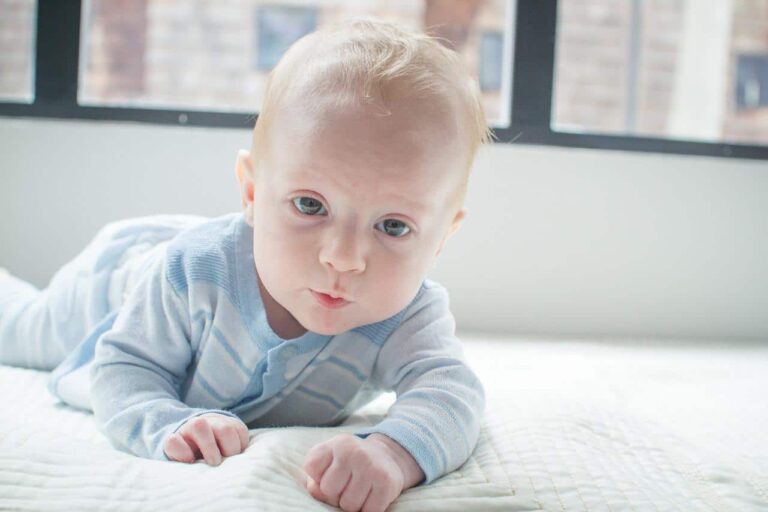What is Asymmetrical Crawling and How to Fix it
You might have heard the saying, “Run before you can walk.” Many people jump (or, in this case, run) into complicated tasks and projects without learning the basics.
In reality, walking is just as complicated as running. And nobody knows that more than babies. For little ones, their first step to developing their motor skills is through creeping and crawling on the floor.
But many babies don’t get the hang of crawling in a snap. Some tots experience asymmetrical crawling when they first start practicing their motor skills.
While not unusual, asymmetrical crawling does have its downsides. And if not corrected immediately, it can affect your infant’s muscles and mobility.
Skip To The Following Sections
What is Asymmetrical Crawling?
Babies start experimenting with movement at 6 months old. Babies use their hands and knees to rock themselves back and forth and create motion. At 9 months, you can start seeing your infant getting down on the floor and crawling.
Crawling is a crucial milestone in a baby’s development. It’s when your baby starts to build those core muscle groups and learn how to use their limbs for movement.
But some infants experience trouble when learning how to go on four. Asymmetrical crawling is one atypical technique that parents must look out for.
Asymmetrical crawling means your infant is not moving their body in a unified manner. Asymmetrical and atypical crawling comes in many forms, such as bear walking, hitch crawling, and bottom scooting. While many atypical crawling methods won’t cause harm immediately, an incorrect posture can affect your baby’s muscles and bones.
Why Does is My Baby Practicing Asymmetrical Crawling?
For a lot of babies, asymmetrical crawling is a temporary occurrence. Babies who have just started using their hands and knees are adapting to their newfound skills. Most of the time, they can either self-correct themselves or will only require a bit of assistance.
However, other babies might not adapt to their changing bodies and struggle with maintaining form and balance. Babies with poor muscle tone, developmental delays, issues with their pelvis, hips, or joints, and weak vision are more likely to practice asymmetrical crawling.
Your child’s clothes might also cause asymmetrical crawling. Your baby’s knees will frequently hit the floor when they first start creeping around, causing discomfort. To offset the unwanted sensation, your baby will choose to crawl atypically.
Some babies are more likely to try asymmetrical crawling than others. Babies with autism and cerebral palsy have a higher chance of crawling differently. However, asymmetrical crawling alone is not a sign of either autism or cerebral palsy.
Your child’s vision is another factor for atypical and asymmetrical crawling. Your child’s eyes are the guide that allows them to calculate their next move. Any impairment that makes moving their eyes harder to accomplish can lead to them crawling atypical to get a better angle of the world.
Sometimes, infants can switch from their normal crawling position to something atypical. However, this is just a sign that your infant is practicing their motor skill and are experimenting with the different ways their bodies can move.
How to Fix Asymmetrical Crawling?
Long-term asymmetrical crawling can affect your baby’s mobility and anatomy. Failing to correct your baby’s posture can lead to developmental issues, including issues in muscle development, scoliosis, and trouble balancing. So how do you fix your infant’s asymmetrical crawling?
Providing physical support is a great first step in correcting your infant’s crawling. Adjust their hands and knees if you notice their crawling is going out of sync.
If your infant’s clothes are too thin, you can give them thicker trousers or padded crawling pants. Your baby’s clothes should protect their knees from friction while crawling on the floor. It should also allow them more movement to practice crawling more efficiently.
Likewise, be cautious with where your baby is crawling. Make sure there are no sharp or dangerous objects on the floor that can puncture your infant. You can also add a few rugs around the house to give your baby a comfortable place to crawl on.
If continuous support is not working for you and your baby, consider going to your pediatrician for a check-up. Your child’s doctor can diagnose your baby if they are experiencing any underlying health problems.
If you’re unsure if your baby’s crawling is atypical or not, capture a video of your child’s crawling and show it to a health professional. They can advise you on what to do and determine what kind of crawling your infant is doing.
Asymmetrical crawling is usually brought by weak muscles, bones, and joints. Correcting your baby’s crawling can help them out immensely once they try to reach their next milestone.
FAQ:
When do babies start crawling?
Babies start to practice crawling at around 6 months by rocking back and forth. At 9 months, they can better control their arms and legs and start creeping and crawling.
Is asymmetrical crawling a sign of a health issue?
Asymmetrical crawling is linked to developmental issues, autism, cerebral palsy, and visual impairment. But not all babies who have problems in crawling have a health condition.
Can infants outgrow asymmetrical crawling?
Some babies can self-correct and outgrow asymmetrically crawling, while others need extra help from parents and their pediatrician.
Conclusion
Crawling is an important milestone in a baby’s growth, especially for their motor skills. While some babies crawl on their own with ease, others may have a harder time grasping how their hands and knees can work together.
Asymmetrical crawling can happen to almost all children. Some crawl atypically to practice their abilities, while others may need extra help learning how to go on their fours. For some babies, asymmetrical crawling can be one sign of a health issue.
Asymmetrical crawling can cause problems if not corrected in the long run. Fortunately, parents can provide physical support to correct their infant’s crawling technique.
Infants don’t learn to run before they walk, that’s for sure. But they wouldn’t be able to do both of those things without learning how to crawl first.










